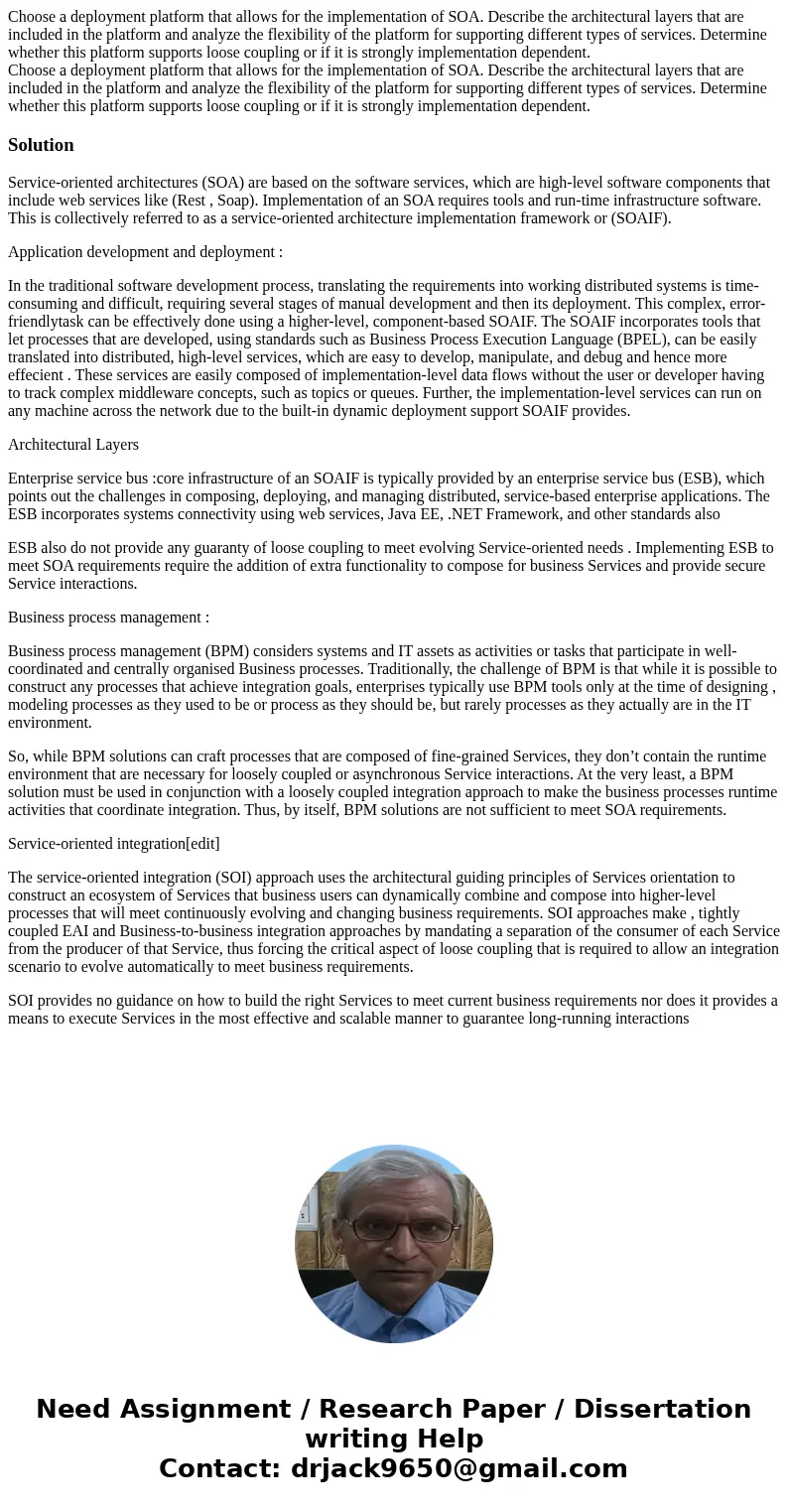Choose a deployment platform that allows for the implementat
Solution
Service-oriented architectures (SOA) are based on the software services, which are high-level software components that include web services like (Rest , Soap). Implementation of an SOA requires tools and run-time infrastructure software. This is collectively referred to as a service-oriented architecture implementation framework or (SOAIF).
Application development and deployment :
In the traditional software development process, translating the requirements into working distributed systems is time-consuming and difficult, requiring several stages of manual development and then its deployment. This complex, error-friendlytask can be effectively done using a higher-level, component-based SOAIF. The SOAIF incorporates tools that let processes that are developed, using standards such as Business Process Execution Language (BPEL), can be easily translated into distributed, high-level services, which are easy to develop, manipulate, and debug and hence more effecient . These services are easily composed of implementation-level data flows without the user or developer having to track complex middleware concepts, such as topics or queues. Further, the implementation-level services can run on any machine across the network due to the built-in dynamic deployment support SOAIF provides.
Architectural Layers
Enterprise service bus :core infrastructure of an SOAIF is typically provided by an enterprise service bus (ESB), which points out the challenges in composing, deploying, and managing distributed, service-based enterprise applications. The ESB incorporates systems connectivity using web services, Java EE, .NET Framework, and other standards also
ESB also do not provide any guaranty of loose coupling to meet evolving Service-oriented needs . Implementing ESB to meet SOA requirements require the addition of extra functionality to compose for business Services and provide secure Service interactions.
Business process management :
Business process management (BPM) considers systems and IT assets as activities or tasks that participate in well-coordinated and centrally organised Business processes. Traditionally, the challenge of BPM is that while it is possible to construct any processes that achieve integration goals, enterprises typically use BPM tools only at the time of designing , modeling processes as they used to be or process as they should be, but rarely processes as they actually are in the IT environment.
So, while BPM solutions can craft processes that are composed of fine-grained Services, they don’t contain the runtime environment that are necessary for loosely coupled or asynchronous Service interactions. At the very least, a BPM solution must be used in conjunction with a loosely coupled integration approach to make the business processes runtime activities that coordinate integration. Thus, by itself, BPM solutions are not sufficient to meet SOA requirements.
Service-oriented integration[edit]
The service-oriented integration (SOI) approach uses the architectural guiding principles of Services orientation to construct an ecosystem of Services that business users can dynamically combine and compose into higher-level processes that will meet continuously evolving and changing business requirements. SOI approaches make , tightly coupled EAI and Business-to-business integration approaches by mandating a separation of the consumer of each Service from the producer of that Service, thus forcing the critical aspect of loose coupling that is required to allow an integration scenario to evolve automatically to meet business requirements.
SOI provides no guidance on how to build the right Services to meet current business requirements nor does it provides a means to execute Services in the most effective and scalable manner to guarantee long-running interactions

 Homework Sourse
Homework Sourse